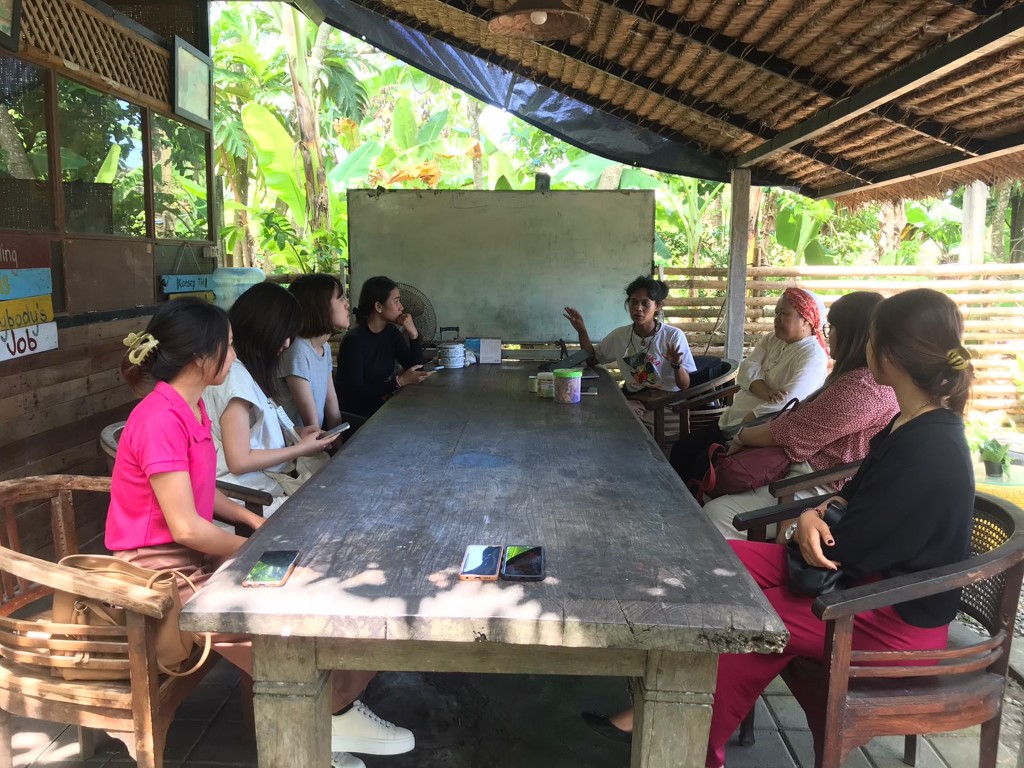
Activities carried out by SASHI in Bali Province are currently focused on areas with potential for social forestry across various schemes. These areas encompass the West, North, and East Bali regions. The ongoing SASHI Foundation program involves assessing the impact of social forestry schemes in Bali Province on greening efforts and community resilience against climate change, as well as optimizing environmental and socio-economic benefits for social forestry permit holders.
Furthermore, to map the forest potential in three Forest Management Rights (FMR) areas in Bali, Penyaringan , Wanagiri , and South Batur, SASHI has been conducting periodic tree inventories and comprehensive mapping related to these forests’ potential.
Furthermore, in order to map the forest potential in three areas of Forest Management Rights (FMR) in Bali, namely, Penyaringan , Wanagiri , and South Batur , SASHI has also been conducting periodic Tree Inventory and comprehensive mapping related to the potential of these forests.
Why Bali?
The Bali Province has a land area of approximately 5,637.66 km2, of which 23.2% is forested land.
This area consists of protected forests (95,766.06 ha), permanent production forests (1,907.1 ha), limited production forests (6,719.26 ha), and nature reserves (26,294.59 ha). The province aims to achieve 30% green area by preserving existing forest areas and increasing greening outside these areas using endemic tree species, medicinal plants, and other plants useful for traditional ceremonies.
Bali has Three Areas with Key Biodiversity Areas (KBAs).
These KBAs are forests in the West Bali region, Mount Batu Karu, and Nusa Penida. These three KBAs require further protection through sustainable management plans and programs. The SASHI Foundation aims to implement its three programs in these three KBAs in the future.
Bali Optimizes the Benefits of Existing Forest Areas by Developing Social Forestry Programs.
By the end of 2022, there were approximately 21,671.1 ha of social forestry in this province, with the largest area being village forests (43 permits covering 14,097 ha), followed by forestry partnerships (56 permits covering 4,302.1 ha), community forests (14 permits covering 2,124 ha), community plantation forests (1 permit covering 177 ha), and customary forests (6 permits covering 971 ha). This program also aims to provide greater benefits from the forest to local communities and indigenous peoples, enabling them to practice their local wisdom in protecting and utilizing forests, especially in sacred places and traditional agroforestry practices.
In Implementing its programs in Bali, the SASHI Foundation has partnered with various stakeholders.
These include the Bali Province Forestry and Environmental Agency, Forest Management Units in Bali, the Ministry of Forestry, the Jembrana Regency Government, and several Non-Governmental Organizations and philanthropic institutions such as the Samdhana Institute, the Rainforest Trust, the Indonesian International Education Foundation, the Wisnu Foundation, the Indigenous Peoples' Alliance of the Archipelago Bali, and the Indigenous Peoples' Registration Agency. In the future, the SASHI Foundation is committed to continuing its support for conservation and environmental protection efforts, expanding its cooperation with additional partners, and promoting sustainable development in Bali, especially in the three KBA regions.









